Devon Trevarrow Flaherty's Blog, page 37
December 31, 2020
Start Your Own Book Club
Is there something that you want to read this year? With all this pandemic nonsense (it’s not actually nonsense, I’m just over it in like August and am referring breezily to something that has been very real and terrible for me lately), I am—like many people—really staring off at the horizon of 2021. Of course, there’s not too much going to change as the ball drops and we drunkenly mumble under a blanket of chip crumbs our way through “Auld Lang Syne.” But we can dream that during 2021 many things will be restored to us. At any rate, this turning of the year has a different significance from others, and I thought it would be fun for me and helpful for you to compile a list of book club ideas for 2021. And it might be cool or even healthy if you reached out on Zoom and started yourself a book club that—God willing—will turn into meeting in the park will turn into meeting at a coffee shop before this year closes. Some of the lists are meant especially for this awkward time in history, but some of them (toward the bottom) are a lot more adaptive to any time.
Note: I have not read the vast majority of these books. They are not recommendations as much as thematic lists that I might want to explore, as well. And you can explore them with a group: hate them or love them, rearrange them (though I did give some thought to the order), swap some titles out, tackle a re-read or a book that is entirely too long or deep for you to tackle in a month… The ones with more links (read: reviews) are ones in which I have read more of the titles. I gave swapping options where I thought you might need them, for whatever reason. There are likely to be spelling errors and possibly also books that are just plain on the wrong list. I can give no more than the hours I have already spent, but feel free to correct me in comments. Some lists have a combo of fiction and nonfiction.
GETTING OVER 2020 (Therapy for the Pandemic and Post-Pandemic through Books)
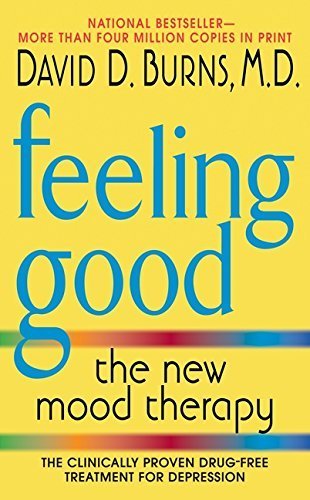 Cover image from Amazon.com
Cover image from Amazon.comFeeling Good: The New Mood Therapy¸ David D. BurnsThe Happiness Trap, Russ HarrisThe Kindness Challenge, Shaunti FeldhahnAnxious for Nothing, Max Lucado (*Christian book* Option: Anxiety, Clair Bidwell Smith)Overwhelmed, Brigid SchulteThink Like a Monk, Jay ShettyGmorning, Gnight, Lin-Manuel Miranda (Option: Notes on a Nervous Planet, Matt Haig)Lives of the Stoics, Ryan HolidayIt’s Not Supposed to Be This Way, Lysa TerKeurst (*Christian book* Option: Don’t Feed the Monkey Mind, Jennifer Shannon)Dare, Barry McDonaghWhy Zebras Don’t Get Ulcers, SapolskyBurnout, Nagoski and Nagoski (*book for women* Option: Rising Strong, Brene Brown)
DEALING WITH 2020 (Things You Might Need in a Pandemic Like Ours)
 Cover image from Amazon.com
Cover image from Amazon.comPrepper’s Long-Term Survival Guide, Jim CobbThe Well-Centered Home, William HirschAdult Activity Book and Deadliest Enemy, Michael T. OsterholmThe Tassajara Bread Book, Brown and SureshaBeginner’s Guide to DIY and Home Repair¸ Jo Behari365 Days of Art/Creativity/Nature, Lorna Scobie (or a specific book for a new interest)Build Your Perfect Bog-Out Bag, Creek Stewart 399 Games, Puzzles, and Trivia Challenges, Nancy Linde (and According to Hoyle, Richard L. Frey)The Self-Sufficient Life and How to Live It, Seymour and HeadonThe Surprise Date Challenge Home Edition, Dana LamBobby at Home, Bobby Flay (Options: Modern Comfort Food, Ina Garten or Ottolenghi Simple, Yotam Ottolenghi)Full Catastrophe Living, Jon Kabat-Zinn
FOR THE NEW YEAR: A BETTER YOU (In No Particular Order, Books That Will Help with New Years’ Resolution-y Stuff All Year Long)
 Cover image from Amazon.com
Cover image from Amazon.comFinding Your Way in a Wild, New World, Martha N. BeckThe Power of Habit, Charles DuhiggDrive, Daniel H. PinkHow to Win Friends and Influence People, Dale CarnegieThe 7 Habits of Highly Effective People, Stephen R. Covey (Option: Better Than Before, Gretchen Rubin)The Mind-Gut Connection, Emeran MeyerYear of Yes, Shonda RhimesGrit, Angela Duckworth (Option: You’re Not Lost, Maxie McCoy)Maybe You Should Talk to Someone, Lori GottleibThe Blue Zones Kitchen, Dan BuettnerLifespan, David A. SinclairThe New Health Rules, Lipman and Claro
SOCIAL ISSUES (Novels and Nonfiction That Might Get You Talking and Thinking about Some Important Stuff)
 Cover image from Amazon.com
Cover image from Amazon.comBeyond Hashtag Activism, Mae Elise Cannon (*Christian book* Options: see below)That Night, Amy Giles (Option: Thoughts & Prayers, Bryan Bliss)Grown, Tiffany D. JacksonHuman Flow, Ai, et alPunching the Air, Ibi Zoboi (or Dear Martin, Nic Stone or The Hate U Give, Angie Thomas)Blood and Earth, Kevin BalesA Very Large Expanse of Sea, Tahereh MafiOnce I Was You, Maria Hinojosa (or I Wish You All the Best, Nathan Deaver)Buried Beneath the Boabab Tree, Nwaubani and MazzaStamped, Reynolds and KendiThe Uninhabitable Earth, David Wallace-WellsWe Are the Champions, Bansal and Tak
MODERN WOMEN WRITERS (Lauded Books Written by Women in the Past Ten Years, Surprisingly Heavily About Social Issues and Nonfiction-Journalism)
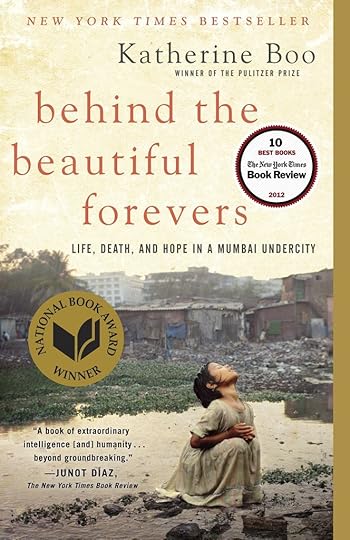 Cover image from Amazon.com
Cover image from Amazon.comBehind the Beautiful Forevers, Katherine BooWild, Cheryl StrayedNothing to Envy, Barbara DemickThe Warmth of Other Suns, Isabel WilkersonThe Immortal Life of Henrietta Lacks, Rebecca SklootWave, Sonali DeraniyagalaThese Truths, Jill Lapore (Option: Dark Money, Jane Mayer)The Sixth Extinction, Elizabeth Kolbert (Option: This Changes Everything, Naomi Klein)The Invention of Nature, Andrea WulfSecondhand Time, Svetlana AlexievitchAll the Single Ladies, Rebecca Traister (Option: A Little Life, Hanya Yanigahara)The Tiger’s Wife, Tea Obreht
(I couldn’t seem to keep this list to twelve, so here is a second one, more novel-heavy)
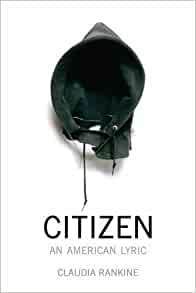 Cover image from Amazon.com
Cover image from Amazon.comCitizen, Claudia RankineSing Unburied Sing, Jesmyn WardQuiet, Susan CainMy Brilliant Friend, Elena FerranteMating in Captivity, Esther PerelThe New Jim Crow, Michelle AlexanderCirce, Madeline MillerHomegoing, Yaa GyasiThe Leavers, Lisa KoStation Eleven, Emily St. John MandelThe Night Circus, Erin MorgensternRed at the Bone, Jacqueline Woodson (Option: Little Fires Everywhere, Celeste Ng)
WORLD VOICES (A Small Amount of Books to Represent a Great Big World)
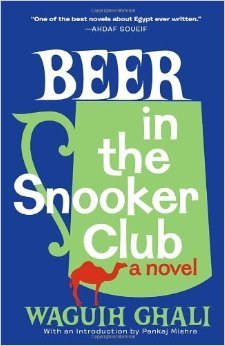
Beer in the Snooker Club, Waguih GaliThings Fall Apart, Chinua Achebe (Option: Half of a Yellow Sun, Chimamanda Ngozi Adichie)A Fine Balance, Rohinton MistryRashomon and Seventeen Other Stories, Ryunosuke Akutagawa (Option: The Wind-Up Bird Chronicle, Haruki Murakami)The Master and Margarita, Mikhail BulkagovThe Wonderful Adventures of Nils¸ Selma Lagerlof or Independent People, Halldor LaxnessThe House of the Spirits, Isabel AllendeThe Absolutely True Diary of a Part-Time Indian, Sherman AlexieWhale Rider, Witi IhimaeraThe Kite Runner, Khaled HousseniA Suitable Boy, Vikram SethThe Three-Body Problem, Liu Cixin
CLASSICS (Some of the Best Classics, In My Opinion, to Re-Introduce Someone, with a Couple Modern Classics in which I Tried to Spread Out the Hefty Ones)
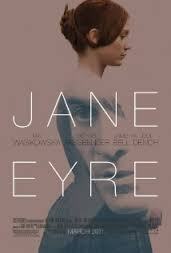
Jane Eyre , Charlotte Bronte Ethan Frome , Edith WhartonAnna Karenina, Leo Tolstoy The Scarlet Letter , Nathaniel HawthorneEmma, Jane AustenLes Miserables, Victor Hugo The Great Gatsby , F. Scott Fitzgerald Alice’s Adventures in Wonderland and Through the Looking Glass ¸ Lewis Caroll Wuthering Heights , Emily Bronte The Old Man and the Sea , Ernest Hemingway To Kill a Mockingbird , Harper Lee
POPULAR HISTORICAL FICTION (A List I Compiled Because It Gives My Brain a Bit of a Break)
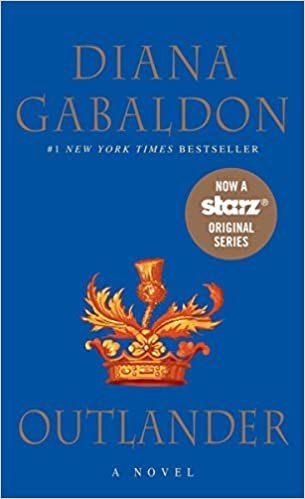 Cover image from Amazon.com
Cover image from Amazon.comOutlander, Diana GabaldonThe City of Brass, S.A. ChakrobortyJonathan Strange & Mr. Norrell, Susanna ClarkeThe Golem and the Jinni, Helene WeckerThe Lost Queen, Signe PikeThe Strange Case of the Alchemist’s Daughter, Theodora GossA Darker Shade of Magic, V.E. SchwabThe Philosopher’s Flight, Tom MillerThe Poppy War, R.F. KuangAll the Light We Cannot See, Anthony DoerrThe Pillars of the Earth, Ken FollettThe Nightingale, Kristin Hannah
VICTORIAN LITERATURE (This Seemed Fun, Although Random, and Includes No Author Repeats)

Jane Eyre , Charlotte Bronte Wuthering Heights , Emily BronteMiddlemarch, George EliottVanity Fair, William Makepeace ThackerayTess of the D’Ubervilles, Thomas HardyDracula, Bram StokerThe Woman in White, Wilkie CollinsThe Warden, Anthony TrollopeBleak House, Charles DickensThe Picture of Dorian Grey, Oscar WildeNorth and South, Elizabeth Gaskell (Option: The Tenant of Wildfell Hall , Anne Bronte)The Strange Case of Dr. Jeckyll and Mr. Hyde¸ Robert Louis Stephenson
AROUND THE WORLD (Since We Can’t Physically Travel Much in a Pandemic, Why Not Go in the Pages of Books?)
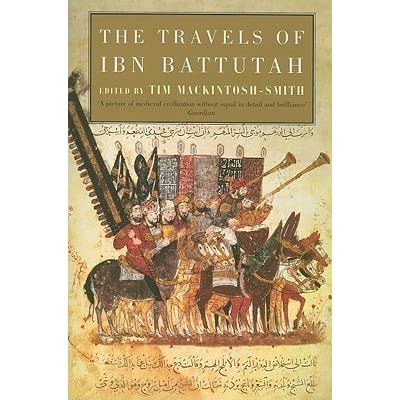 Cover image from Amazon.com
Cover image from Amazon.comThe Travels of Ibn Buttata, Ibn ButtataThe Innocents Abroad, Mark TwainBlack Lamb and Grey Falcon, Rebecca WestChina Along the Yellow River, Cao JinqingThe Rings of Saturn, W.G. SebaldOn the Road, Jack KerouacLetters to a Young Novelist, Mario Vargas LlosaTravels with Charley, John SteinbeckThe Beach, Alex GarlandOur Man in Havana, Graham GreeneZen and the Art of Motorcycle Maintenance, Robert M. PirsigWhen the Going Was Good, Evenlyn Waugh (Option: Video Night in Kathmandu, Pico Iyer)
THROUGH TIME (This Also Seemed Fun; Travelling Through Time. Read a Book from Each Century!)
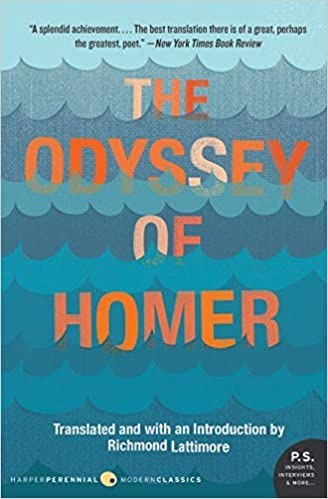 Cover image from Amazon.com
Cover image from Amazon.comThe Odyssey, Homer or BeowulfMetamorphoses, Ovid or Medea, EuripidesThe Tale of Gengi, Murasaki ShikibuHistories of the Kings of Britain, Geoffrey of MonmouthThe Travels of Marco Polo, Marco PoloThe Canterbury Tales, Geoffrey ChaucerLe Morte d’Arthur, Thomas Malory or Hamlet, William ShakespeareDon Quixote, Miguel de CervantesRobinson Crusoe, Daniel Defoe or Gulliver’s Travels, Jonathan SwiftWuthering Heights, Emily BronteThe Catcher in the Rye, J.D. Salinger or The Great Gatsby , F. Scott FitzgeraldThe Road, Cormac McCarthy or The Brief Wondrous Life of Oscar Wao, Junot Diaz
TIME TRAVEL (Because It Is My Husband’s Favorite “Genre” and I Bought Him Like Four Books for Christmas, with Two Bigfoot Books at the End because That’s His Other Favorite “Genre”)
 Cover image from Amazon.com
Cover image from Amazon.comHere and Now and Then, Mike ChenThe Time Machine, H.G. WellsThe Time Traveler’s Wife, Audrey NiffeneggerDark Matter, Blake Crouch11/22/63, Stephen KingTime and Again, Jack FinneySlaughterhouse Five, Kurt VonnegutDooms Day Book, Connie WillisKindred, Octavia E. ButlerOutlander, Diana GabaldonDevolution, Max BrooksThe Beast of Boggy Creek, Lyle Blackburn
MAGIC REALISM (Because It Is My Favorite Genre and You Could Also Read Benevolent, by Me)

One Hundred Years of Solitude, Gabriel Garcia MarquezThe House of Spirits, Isabel AllendeMidnight’s Children, Salman RushdieBeloved, Toni MorrisonLike Water for Chocolate, Laura EsquivelKafka on the Shore, Haruki MurakamiThe Master and Margarita, Mikhail BulgakovChocolat, Jane HarrisBone Gap¸ Laura RubyThe Particular Sadness of Lemon Cake, Aimee BenderThe Strange and Beautiful Sorrows of Ava Lavender, Leslye WaltonThe Night Circus, Erin Morgenstern
You could also easily visit one of my best ofs lists and choose twelve books from any of those. These lists include:
ComedyAutobiographies and MemoirsTravelHistoryScience FictionFantasyPicture BooksChildren’sMiddle GradesYAPoetryNonfiction and JournalismFoodCookbooksGraphic NovelsLiterary FictionPlaysScreenplaysWorld Literature (broken up by regions)2000s2010sWritingChristianityReligionPhilosophyClassicsShort StoriesShort Story CollectionsHolidays
December 29, 2020
A Book a Week Through the Year
Perhaps this is a crazy undertaking for me as a blogger, since it would be a little crazy for you as a reader to attempt what it will imply: reading a book a week for the year. I don’t know what’s wrong with me—or with other people, for that matter—that lists and attempts like this would appeal to us. I love beginning things like it (like Keri Smith books and New Years’ resolutions and baking my way through a season of The Great British Baking Show) and also like to gawk at others who attempt them (Julie and Julia). I am going to stick to shorter books (no War and Peace, Roots, or Arabian Nights here), because I just can’t expect you to read many large books in a week. (Some authors, like Zadie Smith, Haruki Murakami, and the Bronte sisters, and some books, like The Lord of the Rings trilogy and Anna Karenina, were just too long to include here.) You have a life, amiright? But some books read fast, so you might find those here.
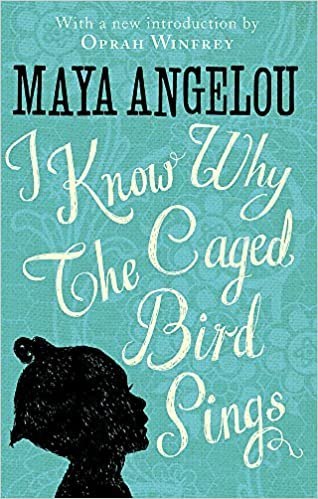
I am not afraid of middle grades or young adult books, so they are included (especially since they often make a quick read). I tried to include literature from across a spectrum, but I found a few areas to be lacking. Therefore, I included a few titles I have not read myself. I also did this occasionally when I love the author but I hadn’t read a length-appropriate title. I starred the books I haven’t read. Otherwise, click on the title to read my review. I would recommend doing this each time, because sometimes I explain some needed information about a book or I tell you how to have the best reading experience with it. There are a few books that don’t have reviews. Oof. And I gave you a few books that are first in a series. You can do with that what you will. The point is to expose you to an under-300 page (except, incidentally, the first one so you better get crackin’), quality book from across the reading spectrum (genre, space, and time, literary to popular), each week. (The place I really unrepresented is East Asia, but I am still doing my own exploring into this literature. The youth are overrepresented because I am a home school mom. I included a couple titles to swap for middle grades lit, if you want.) Still, I think this would be fun for someone who even slightly resembles my interests.
Note: My next blog will be a plan for reading a book a month and doing a book club. If that’s more your speed, just hang on a sec.
Another note: I will be giving you a list of supplemental books, as well. Reading for fun is fun, but you’ll also need a journal, planner, and some self-help/inspirational reading to do “on the side.” This will be at the bottom of the post. In case you’re a writer, I’ll also give you some trade reading to do. I did not include non-fiction.
One Last Note: These are dated for 2021, turning over to a new book on Fridays. You could easily apply them to any other year.
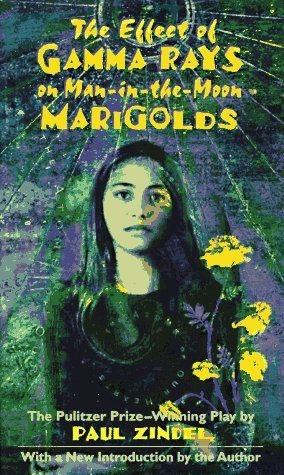
January 1: Life of Pi, Yann MartelJanuary 8: The Effect of Gamma Rays on Man-in-the-Moon Marigolds , Paul ZindelJanuary 15: The Things They Carried, Tim O’BrienJanuary 22: Ethan Frome , Edith WhartonJanuary 29: Home Cooking: A Writer in the Kitchen , Laurie ColwinFebruary 5: The Wheel on the School , Meindert DeJong (swap: Kokoro, Natsume Soseki *)February 12: Northanger Abbey, Jane Austen *February 19: Till We Have Faces, C. S. LewisFebruary 26: Smile, Sisters, and Ghosts, Raina TelgemeierMarch 5: The Joy Luck Club, Amy TanMarch 12: The Kite Runner, Khaled Hosseini *March 19: On Writing, Stephen KingMarch 26: The Princess Bride , William GoldmanApril 2: Anne of Green Gables , L. M. MontgomeryApril 9: Best Remembered Poems, Martin GardnerApril 16: The House at Pooh Corner, A. A. MilneApril 23: Disgrace, J. M. Coetzee *April 30: The Essential Gwendolyn Brooks, Gwendolyn Brooks *May 7: Bridge to Terabithia , Katherine PatersonMay 14: Grimm’s Fairy Tales , Jacob and Wilhelm GrimmMay 21: King Lear, William ShakespeareMay 28: Wonder , R. J. PalacioJune 4: The Bean Trees, Barbara Kingsolver *June 11: A Manual for Cleaning Women, Lucia Berlin *June 18: Pipi Longstocking, Astrid LindgrenJune 25: The Hunger Games , Suzanne CollinsJuly 2: Ruby Redfort Look Into My Eyes , Lauren Child (Swap: Columbine, Dave Cullen)July 9: Big Fish, Daniel WallaceJuly 16: Matilda, Roald DahlJuly 23: Interpreter of Maladies, Jhumpa Lahiri *July 30: The Great Gatsby , F. Scott FitzgeraldAugust 6: How to Train Your Dragon , Cressida CowellAugust 13: The Scarlet Letter , Nathaniel HawthorneAugust 20: Rosencrantz and Guildenstern Are Dead, Tom StoppardAugust 27: A Girl Named Zippy, Haven KimmelSeptember 3: To Kill a Mockingbird , Harper LeeSeptember 10: Love in the Time of Cholera, Gabriel Garcia MarquezSeptember 17: The Giver , Lois LowrySeptember 24: The Death of Ivan Ilyich, Leo Tolstoy *October 1: I Know Why the Caged Bird Sings, Maya AngelouOctober 8: The Girl with the Dragon Tattoo, Steig Larsson *October 15: Tuck Everlasting , Natalie BabbitOctober 22: Lincoln in the Bardo , George SaundersOctober 29: Harry Potter and the Chamber of Secrets, J. K. RowlingNovember 5: The Once and Future King , T. H. WhiteNovember 12: Carry On, Mr. Bowditch , Jean Lee Latham (Swap: Palace Walk, Naguib Mahfouz *)November 19: The Things Around Your Neck, Chimamanda Ngozi Adichie *November 26: The Absolute True Diary of a Part-Time Indian, Sherman Alexie *December 3: The Old Man and the Sea , Ernest HemingwayDecember 10: The Bone People, Keri Hulme *December 17: A Christmas Carol , Charles DickensDecember 24: When You Reach Me , Rebecca Stead
So, here’s an idea of the “other” books you’ll need this year:
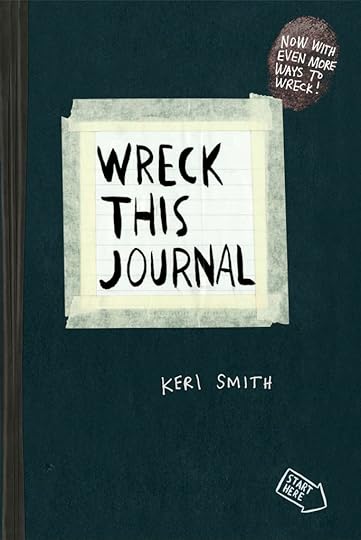
A planner: try Kokuyo Jibun Techo 2021, Little More Daily Organizer, or Moleskin Classic 12 MonthA journal: I love the Decomposition Notebooks (I like grid or blank pages). My daughter prefers a bullet journal, like Leuchtturm or Dotted Grid Notebook.Something to keep your creative juices flowing—you might need a few of these. Here is a long list of my “next”s: The Keri Smith Deluxe Boxed Set, or other Keri Smith books, Finish This Book, The Imaginary Mind of ___, How to Be an Explorer of the World, The Wander Society, or Live Out Loud; I Wrote a Book About You, Clarke and Edge; Q&A A Day, Potter Gift; Piccadilly’s Complete the Story or Write the Story; Peter Pauper Press’s The Book of Me; Chronicle Books’ One Line a Day; What I Wore Today, Gemma Correll; 642 Things to Draw or 642 Things to Write About, Po Bronson.Whatever self-help or inspirational book speaks to your current situation. I am beginning with Anxious for Nothing¸ by Max Lucado and am also looking at Get Out of Your Head by Jennie Allen and Overwhelmed by Brigid Shulte. At the end of the year, I’d like to try Honest Advent, by Scott Erickson.Non-fiction book ideas: In Cold Blood, Truman Capote; A Room of One’s Own, Virginia Woolf; Nickel and Dimed, Barbara Ehrenreich; Bury My Heart at Wonnded Knee, Dee Brown; Black Boy¸ Richard Wright; Emperor of All Maladies, Siddhartha Mukherjee.Cookbooks ideas: Plenty, Yotam Ottolenghi; The Art of Simple Food, Alice Waters; and Pie, Ken Heidrich. Among my favorites are Deborah Madison’s Vegetarian Cooking for Everyone and anything Burt Greene.
Writing Books to Read This Year: (Whatever your trade (and/or hobbies) may be, you’ll want to do a little reading in that area. I’m a writer and I will probably purchase a book on embroidery. I also love to throw in books on philosophy. Here’s a writing book for every couple months, plus a couple subscriptions.)
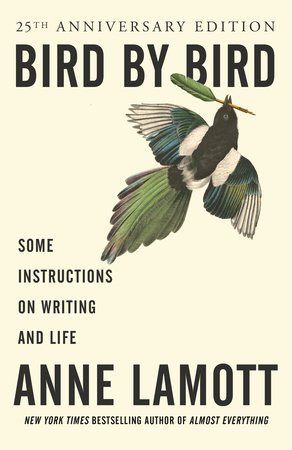
Poets & Writers subscriptionWriter’s Digest subscriptionSubscription to the literary journal of your choice. I don’t have one, really.Bird by Bird, Anne LamottZen in the Art of Writing, Ray BradburyOn Writing Well, William ZinsserThe Writing Life, Annie DillardWriting Down the Bones, Natalie GoldbergPity the Reader¸ Kurt Vonegut, etc.
For more ideas of what to read this year, from fiction to cookbooks to more writing books, see the Best Books lists HERE.
December 28, 2020
Book Review: The Case for Christmas
I read Lee Strobel’s The Case for Christmas because it showed up on the best-ofs lists for the holidays, not because I am a Christian or because I am searching for answers about God or the Christmas story. Clearly, this book—more like an extended tract—is meant for the latter. The seeker seeking around the holidays. But I will come right out and tell you what many other people will tell you: if you are seeking either to find God, to debunk God, or to deepen your baby faith in God, skip this book and read The Case for Christ, instead. The Case for Christmas, it turns out, is just a truncated version of The Case for Christ. In this sense, it’s a holiday-time ministry tool, and not so much an amazing book. As it is, The Case for Christ is not terribly long, but, I am told, is more rigorous and engaging.
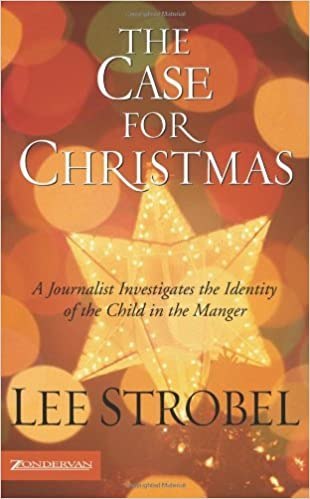
It goes like this: Lee Strobel is a journalist and he was a skeptic. Some number of years ago he set out to disprove Christianity using his journalistic tools (including lots of interviewing experts). Instead, he ended up proving it instead, at least to himself, so he wrote The Case for Christ to prove it to others, as well, and to show that a thorough study of the facts could lead even a skeptic to a qualified belief in the God of the Bible and His Son Jesus Christ. It’s been a best-seller for quite some time. I think I might have a copy on my shelf, but I have not read the whole thing. Apparently, there are now a few shorter and adapted versions of The Case for Christ, including the Christmas-themed one (and an evangelistic video). While I appreciate that these little booklets could fall in the right hands at the right time and change a life, I would recommend just reading the original.
While there are many other books like it—One Minute Answers to the Skeptics, Finding God in Science and, the one that seems fun to me, Cold-Case Christianity among them—Strobel stood out from the beginning as being both in the business of fact-finding and truth-telling and also as someone who set out to get answers that were ultimately opposite of what he found. So, ultimately, what I can say about this little book besides “read the bigger one” is that Strobel’s writing is decent. He keeps you engaged, though it moves way too fast in the Christmas version (through eyewitness evidence, archeological evidence, Jesus’ God-ness and his fulfilling of Jewish prophecy), making it appear that he wasn’t very thorough at all. It also lacks a more romantic, narrative tone, which makes complete sense given his background and intent. I appreciate the stories that he uses at the start of each chapter, pulling the reader into an interesting journalism story that has nothing to do with Christ until it does. It’s okay. I would like to give the first version a shot.
QUOTES
“They had peace despite poverty, while I had anxiety despite plenty; they knew the joy of generosity while I knew only the loneliness of ambition…” (p9).
“Ancient Greek and Hebrew didn’t even have a symbol for quotation marks” (p20).
“I didn’t understand that God would help me make those changes; I thought I had to clean up life on my own” (p85).
December 27, 2020
Short Story Review: Gogol’s The Night Before Christmas
I am running behind, because of the holidays, but we are nearing the end of the Christmas reading reviews. This is the second to the last. And though you tire of hearing me say it, I was surprised by this book.
 Cover image from Goodreads.com
Cover image from Goodreads.comI don’t recall if I’ve read any Nikolai Gogol, though I am certain that I have read some classic Russian literature (Tolstoy, Dostoevsky, and Chekov, obviously). Nikolai/Nikolay Gogol is the “first” of the famous Russian novelists, famous for Dead Souls and for the short “The Overcoat.” He also paved the way for the other authors mentioned above. Officially Ukrainian and surrounded by Cossacks, Gogol first succeeded in writing and drama at school, but then failed to get a government job or work as an actor or poet. He ran away with stolen money to Germany. The money ran out, he went back to St. Petersburg and got a crappy, government job and ran into some luck with the publication of a short story collection. He was young and suddenly famous, writing in a blend of Russian folktale and current, peasant life in the Ukrainian countryside. (We’re talking early 1800s.) This combo is exactly what you’ll find in “The Night Before Christmas.”
“The Night Before Christmas” is also translated “Christmas Eve,” which at least would keep it from getting confused with the even more famous “The Night Before Christmas” poem by Clement Clarke Moore (which is also called “A Visit from St. Nicholas” and comes in a variety of picture books). Gogol’s “Night” is a short story from one of his collections, which tells the story of a handful of colorful 1800s Ukrainian townsfolk on a snowy Christmas Eve. It is full of traditions—caroling, drinking, carousing, and something to do with sacks—and is wrapped around a love story of sorts. One of the characters wants to marry the prettiest girl in town, but she keeps rebuffing him until he subverts a devil in order to fetch for her the Tzarina’s shoes. Yes, there are all sorts of Russian folktale characters and magic elements in this otherwise down-to-earth story: devils, witches, floating dumplings, flying Cossacks…
Which I guess is the part I did not expect. Especially the devils and witches. That, in my limited experience, is the province of Halloween books, unless you are talking Charles Dickens’ The Christmas Carol. But to Gogol and the people who inhabited his place and time, the supernatural and superstitious were wound up tightly with everyday life, which is exactly what is portrayed here. In their tales, it would have been usual for a young man to fight a devil and carry him in his pocket, or something like it, anyways. For me, nearly everything in the story felt new, since Anna Karenina does not include this folktale element. It’s like the beginnings of magic realism.
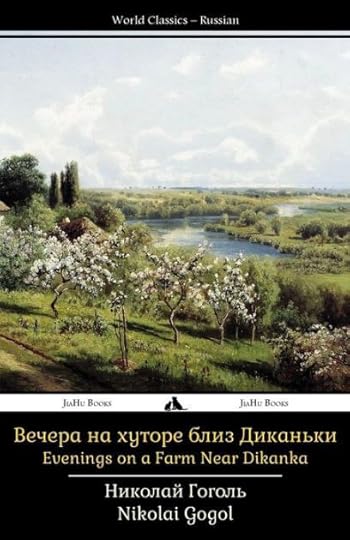 Cover image from Barnes & Noble online
Cover image from Barnes & Noble onlineDid I enjoy the story? Would I recommend it? Well, my copy came as a novella. I think it would be better to buy a copy of all the short stories together, Evenings on a Farm Near Dikanka. Also, my copy is clearly some sort of self-published attempt from a fair use translation. Beware. There were all sorts of spelling and grammatical errors in mine, which I find irritating and gives a bad name to self-publishing. I’m sure there are much better copies, but, like I said, you could also go with the Farm Near Dikanka. Better yet–and much easier to find–get yourself a copy of The Collected Tales of Nicolai Gogol and read the whole thing. And that still doesn’t answer whether or not I liked the story. It was… pretty different, especially for a Christmas story. In many ways, it just didn’t register as a Christmas story but rather as a peek into the 1800s Ukraine and regional folktales. On those terms, it was an interesting short story full of hypocritical vice and the same ol’ humanity expressed in a very different time and place. If you are expecting that, perhaps it would make a nice story to read around Christmastime.
Anyhoo, be ready for something different, which could be nice for a change.
December 26, 2020
Book Review: A Christmas Memory
When I finally—after years of meaning to read it—ordered Truman Capote’s A Christmas Memory from eBay, I did not expect what I got. Full disclosure: I have not read Capote, ever. I have meant to, of course, but have never gotten around to it. Yet. My impression, however, is true crime with a literary swagger. A Christmas Memory is a short story that has been turned into a children’s picture book, several times. I did know the story was short, but not short enough to be a children’s picture book. And I wasn’t even clear that what I bought was a picture book. But lo and behold, there it is on my dresser: a Truman Capote Christmas picture book.
 Cover image from Amazon.com
Cover image from Amazon.comI also knew that this particular story was a Christmas classic. Like Skipping Christmas (see previous review) it graces the top of all the Christmas books lists, with no regard for its brevity or intended audience. Is it even meant for children? It is based on Capote’s own quirky, 1930s childhood, a true story, imbibed with something of a Christmas spirit: a bittersweet nod to familial love and down-home traditions. It is about a child and an old woman. When illustrated, it is clearly meant for children. As a short story, it can appeal to a very wide range of readers. It has strains of more serious things: aging, death, disability, drunkenness, abandonment, poverty… but this makes the whole thing sound much more serious than it comes across. The story itself is light and sweet and except for the part where the older relative procures alcohol during the Prohibition and gets a little drunk with the kid, it wouldn’t need much explanation.
The story in a nutshell: a boy (who was Capote) lives with a houseful of elder cousins after his parents have abandoned him. All of the cousins are somber and strict except for one. She appears to be developmentally delayed and looked down upon, but she is the boy’s best friend and confidant—her and the family dog. They have a few Christmas adventures together, all part of their usual traditions: collecting walnuts, making and sending fruit cakes, exchanging gifts, flying kites… though between the two of them and their combined childishness, nothing is ever done without an eyebrow-raising flourish. They have a moving, if unconventional, friendship that is the center of this story, which is a “memory” of a young man, walking across a college campus shortly after his friend’s death.
I guess I can see why there are fans of A Christmas Memory, but I can’t say it was a favorite of mine. It’s going into the small pile of Christmas books that I keep with the decorations and pull out every year, and I would recommend it. Perhaps, as usual, I was expecting too much. I think I was expecting better writing. But the writing is solid, straight-forward, and, well, I have to keep coming back to the word “sweet” because that is what this story is. Sweet and a little sad. Old fashioned and perspective-giving. And despite its allusions to church and heaven, it exists outside religion as a Christmas story: it’s purely secular, at heart.
There was a made-for-TV movie aired first in 1966 that was narrated by Truman Capote and won several accolades. A 1997 Hallmark movie did fairly well but is not supposed to be as good as the original. The story has been adapted many other times, notably read by Capote for NPR and as a 2010 Broadway musical. I have not seen or listened to any of them, and neither of the movies are available on my streaming services (unless I buy the 1997 version).
December 21, 2020
Book Review: Skipping Christmas
It only makes sense in life that the more niche-y or specific you get, the slimmer the pickin’s and the more difficult it is to find things of quality. As it is with Christmas reading. Most great authors don’t have a Christmas book. There is quite a lot written, but it is taken up largely by the popular genre authors, and I am just not a big fan of cozies (nor, overall, is the writing in that category especially high-brow). When John Grisham wrote a Christmas novel, it was a success before it even hit the shelves. Then the movie version, Christmas with the Kranks, was released quickly, securing a place in holiday literary history for Grisham which he probably doesn’t deserve.
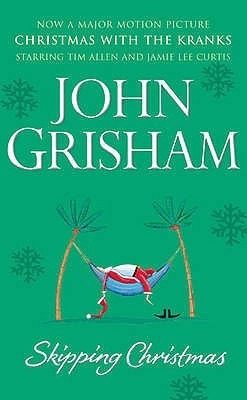
I mean, kudos to him for taking advantage of the desire for a good, Christmas read (I would love to do this, myself, and have a novel in notes with all the others), but it’s hardly a great book. I have never read anything from John Grisham, and have read like maybe one book in his usual genre: legal thrillers. (Lawyers who become writers is a conversation that I’m not going to have right now.) People definitely do, though, as Grisham’s (and others’) thrillers shoot to the top of the best-sellers lists as soon as they are published. Skipping Christmas, riding on Grisham’s coattails, was one of these. It is not, however, a thriller of any sort; just a short, general novel. I suppose it’s a bit satire and comedy, but we’ll get to that in a minute.
If you haven’t seen the movie, Skipping Christmas follows the middle-aged Krank couple over the course of one holiday season. Their daughter, Blaire, has been accepted into the PeaceCorps in Peru and leaves at Thanksgiving, expecting to be incommunicado and gone for a year. Mr. Krank is an accountant, and when he realizes that they spent more than $6000 on their previous Christmas traditions, he comes up with the idea of “skipping Christmas” and using the money to go on a cruise, instead. They book their tickets for Christmas day, notify all their friends and neighbors of their plans to completely abstain, and the fun begins. As Krank muses, there are those in the jealous-hero category and those in the jealous-angry category, and very few people are going to let the Kranks off easy. Each day is a gauntlet of dodging rituals and wild circumstances that make for a pretty funny story. Of course, there’s a twist at the end and something added to make sure we learn something about Christmas spirit.
Well, I had read this book before, but since it was listed in all the lists I could find of holiday reading, I thought I would read it again and review. It was on my shelf. And it doesn’t take very long. It’s also not a great book. I think, with the story line, it could have been, but there are even some spelling and grammatical errors, like nobody cares as long as it comes out quick and is labeled “Grisham.” The issues are mostly in the writing style, which is mediocre, but also in the story itself. We definitely need better supporting characters, including some friends, to step in and have some depth and humor. The jokes are really reaching. The storyline is, at times, suface-y and inauthentic. It felt like it was an attempt at satirizing and being heartfelt—which can be accomplished together—but I don’t think it made it on either count. But some of the biggest issues: who would really have a problem with their neighbors or friend skipping Christmas? (I guess making it a neighborhood light award is a good attempt at making this work.) And—more problematic—what’s with the ending? Grisham could have kept most of the ending (like how the neighbors come together to support people they have been at odds with) but still left out the whole Kranks treating their mid-twenties, world-travelling daughter like a sheltered baby and choosing a life-long lie over the not-at-all-damaging truth.
Not to mention, there are a couple super-weird moments referring to Enrique’s skin color. I can’t even tell if they are racist or just confused, referring to their own tanning for the cruise. I don’t know what’s going on there, but it’s certainly uncomfortable and could be offensive.
Because there aren’t that many holiday books in the literary or even upmarket fiction categories, I find that the holiday reading can be crammed with books that I wouldn’t normally read. Obviously, it’s good enough for huge popularity and for this book to make an appearance on like every holiday reading list I found. It’s not a writer’s writing. I like the idea, but it never pulled me in. It felt like an assigned reading because I was barely engaged with the characters. It would be a good novel to keep stocked at a ski resort or a wintertime bed-and-breakfast or something.
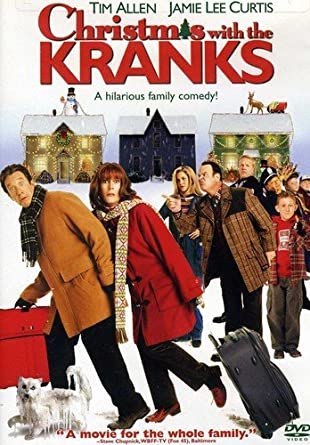
MOVIE: Christmas with the Kranks (2004)
You won’t hear this too often: I like the movie better. The critics hate this movie despite it’s star-studded cast (heck, it’s got 5% on Rotten Tomatoes), but the populace return to it year after year. It’s one of those almost-a-classic holiday movies and the kids and I enjoy watching it. It has those funny moments that you laugh at again and again and all the holiday themes, iconography, etc. The acting is good, I think. I can never decide if a couple of the main actors didn’t overdo it a bit. I still get hung up on the big lie at the end and the strangeness of the reaction of everyone to a couple wanting to skip Christmas, but I still enjoy pulling this movie out about once a year-ish. It also always makes me want to skip Christmas and go on a cruise, myself. (By the way, the name was changed because another movie—Surviving Christmas—was coming out about the same time and they didn’t want any confusion. Surviving Christmas tanked so hard—no one liked it—and has disappeared into movie oblivion.) There are those who hate this movie. I’m cool with it.
December 14, 2020
Shorts Review: Turkey Remains… and Thanksgiving in the Anthropocene
Yes, yes; it’s a bit late for this year, but I have two bits left to review from my Thanksgiving reading. They are a short story of sorts and a poem. The first was recommended to me and the other I found looking about for things to share with my middle grades students.
 Image from amazon.com
Image from amazon.com“Turkey Remains and How to Inter Them with Numerous Scarce Recipes” is a short story by F. Scott Fitzgerald. It’s actually an article?, essay?, journal entry?, note? which is included in the “Note-books” section (in my copy, on p. 193) of the posthumous The Crack-Up, which is a lovingly compiled body of Fitzgerald’s articles, notes, and letters in an attempt at an autobiography of sorts. The Note-books section is Fitzgerald’s own collection of things and thoughts of his own, perhaps meant to be used in later stories or just as a hobby or a diversion. At any rate, the book is out of print (or nearly so) and I found a copy on eBay and was shocked when a friend told me they had just read the same obscure book doing research on the roaring twenties for a baseball history. It does, indeed, contain articles and reflection on the twenties, right there at the beginning, which is as far as I have gotten: the beginning. On page 26, in fact, is where I have stalled. This mishmash is bound to take me all year, so I’ll just pick it up here and there and read a little more. And be entertained. Because it is interesting, but I’ll get to a review when I am done with the thing.
As for “Turkey Remains,” it is a bizarre piece of work, which is redolent of a humor left behind more than half a century ago. Still, as I said, entertaining, especially if you like to high-brow your humor. After reading it once in an article online, I ordered the book. When it came in the mail, I waylaid my husband in the staircase into the house and made him sit down and be read the darn thing. I watched his reaction and it was as I expected—indeed, as I had experienced myself only days before—surprise and then curiosity leading to resignation and a bemused smile. It is very short. It is, as it says, advice on how to deal with turkey leftovers with a handful of attenuated recipes. The recipes get wilder and more unbelievable as you go on, but I don’t want to spoil the fun for you. Let’s put it this way: Fitzgerald is no cook; he is a satirist. And this is no polished essay, it is an entry in his personal notes.
Warning: there are a couple racial terms that are not currently PC. At the time, I think they might have been, but names have changed due to negative connotations associated, etc.
I don’t know yet if I would recommend buying a copy of The Crack-Up unless you are a big F. Scott Fitzgerald fan. (If you are, then of course.) But I would recommend reading “Turkey Remains and How to Inter Them with Numerous Scarce Recipes” online, before Thanksgiving or on it, just for kicks. It’s… different. You won’t lose much time and you might just find your jaded millennialism scraped a little off.
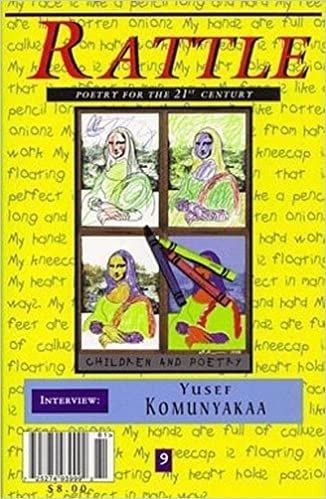 Image from amazon.com
Image from amazon.comAnd now for the poem that I stumbled upon: “Thanksgiving in the Anthropocene, 2015” by Craig Santos Perez. I read this one in rattle’s online poetry magazine. I feel a little conflicted about it. Due to its stark, morbid outlook I did not share it with my middle schoolers, but I thought it deserved a read for Thanksgiving. Maybe next year for you. On the other hand, I don’t find it especially poetic. Mostly straight-forward and sort of resistance-y. My notes from the poem read: “Yeah, so not the best poem I’ve ever read, and yet it’s good enough. Thought-provoking, which is the point. Maybe too forward? Either way, I think it’s a good one to pull out for the holidays, especially for high school or college. A little crunchy and perhaps vegan, but…” Which is my main issue with the poem: it concentrates too long on one issue, which is factory farming. Otherwise, it soars through a number of American hypocrisies in moments and comes out the other side with us all with bowed heads around the table, needing forgiveness.
So two short Thanksgiving reads for you. While the buffet table may be full of food, these two are food for thought.
December 13, 2020
Book Review: Home Cooking
I have a new favorite food writer and—like my other favorite food writer, Bert Greene—she is someone you don’t hear about every day. She whisked into my life with an aroma of days gone by and required me to do a little searching for her titles. (I still have one last Greene book that I follow on eBay and look out for in used book stores: a place I haven’t spent much time this year.) Laurie Colwin may yet still have more of a following than Greene: when I mentioned her at my writing group, there was one other reader-writer who was acquainted with her. When I couldn’t recall her name (before I read her), he said, “You mean Laurie Colwin?”
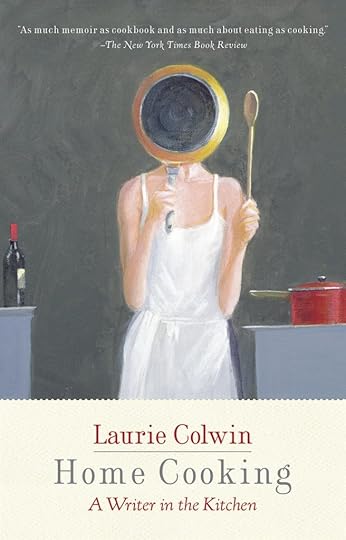
The book I read was recommended for Thanksgiving. Home Cooking: A Writer in the Kitchen is really a series of memoir short stories (called a collection of essays because it was originally uncollected essays), drawn together by the theme of Colwin’s adventures and misadventures in the kitchen. It is very big-city, twentieth century, and a little academic, full of other people walking on and off the page in order to interact with Colwin’s food and hospitality. It covers a couple decades, from her young adulthood to her marriage and her motherhood, but not necessarily chronologically. Still, you get the gist as your read.
Her other works (mostly fiction) are
More Home Cooking (more of the same. I’ve been told it’s good, but not as good)Passion and AffectShine On, Bright and Dangerous ObjectHappy All the TimeThe Lone PilgrimFamily HappinessAnother Marvelous ThingGoodbye Without LeavingA Big Storm Knocked It Over
Home Cooking is a unique book which is a combination of story-telling and food (which is one of the things I like best about Bert Greene. Sorry. I’ll try to leave him behind, now). There are recipes, but they are sparse and random, though they look amazing. The main thing is that Colwin is endearing, approachable, relatable, and especially funny. I do have an issue with reading shorts, where I get distracted between chapters without conventional cliff hangers, but this is my defect, not Colwin’s. Still, expect to read this in short blasts, if this is you. If you are anything like me—a writer in the kitchen—you should enjoy her humor and her wholesome, witty, straight-forward and observant voice. You think you’re just reading about food and entertaining, which is already awesome, but her wry storytelling reveals much more thought than just that. Really, I loved it. Plus, it was written well enough that I am definitely going to go back and try one of her novels sometime soon.
Since I’m finding it difficult to do justice to her old-style, open, side-by-side writing, here’s an example of it:
“After you have cooked your dinner party six or seven times, you will be able to do it in your sleep, but your friends will be bored. You will then have to go in search of new friends who have never had creamed spinach with jalapeno peppers, or you will have to find something new to feed your old friends. In either case, you will be helping to keep the wheels of society spinning in an effortless and graceful way, and no one will ever know how antisocial you really are” (p100).
One caveat: even though excellent, it might not be the book to read in quarantine or under a stay-at-home order. It was a little torturous for me at this time, because it really made me want to have dinner parties and friends for tea and to generally try out new ideas and menus on others. Home Cooking is a celebration of entertaining and of food as part of relationship, as part of society. It’s about communal eating. So it depends on if you’re reading this review during the Covid-19 pandemic and also if you are one of those people who can get satisfaction just from reading about food and gatherings or if it will make you want to have one.
Are you a foodie? Do you enjoy good writing? Run, don’t walk, to get this book.
RECIPES I WOULD LIKE TO TRY:
Extremely Easy Old-Fashioned Beef StewRob Wayne’s Potato Salad with Crème FraichePot Roast with Colwin Snellenberg’s Potato Pancakes and ApplesauceYam Cake with Hot Pepper and Fermented Black BeansOld-Fashioned Steamed Chocolate PuddingCreamed Spinach with Jalapeno PeppersPepper ZucchiniBraised Fennel, Celery, Onion and Red PepperPepper Chicken with Polenta and Broccoli di RapeBeef, Leek and Barley SoupCornbread and Prosciutto StuffingPerfect Chicken SaladLast-Minute SoupChocolate IcingBlack Cake
By the way, it did make a good Thanksgiving/holiday read, but it certainly doesn’t need to be. In essence, it’s not very holiday-like, it just talks a lot about, as I have said, food and sharing food together.
QUOTES:
“When people enter the kitchen, they often drag their childhood with them” (p4).
“It is perfectly possible to cook well with very little” (p16).
“It is wise to keep in mind that pots and pans are like sweaters: you may have lots of them, but you find yourself using two or three over and over again” (p16).
“…it is a fact that you can do anything a food processor can do and do it even during a power failure” (p19).
“Certainly cooking for oneself reveals man at his weirdest” (p27).
“You do not, of course, want to be responsible for the death of your guests, but sometimes it seems that they will be the death of you” (p39).
“For the socially timid, the kitchen is the place to be. At least, it is a place to start” (p70).
“I have been told that you have not lived until you have had swordfish grilled over mesquite. This may be true, but as Abraham Lincoln is said to have said: ‘For people who like this sort of thing, this is the sort of thing they will like’” (p103).
“A long time ago it occurred to me that when people are tired and hungry, which in adult life is much of the time, they do not want to be confronted by an intellectually challenging meal: they want to be consoled” (p106).
“Awful things happen in the kitchen all the time, even to the most experienced cooks, but when it happens to you it is not comforting to know that you are supposed to learn from your mistakes, especially when you contemplate the lurid-looking mess in front of you” (p140).
“Now that I am more accomplished I feel that I am in a position to gauge my kitchen disasters and chose them carefully” (p144).
“Most people eat salad dutifully because they feel it is good for them, but more enlightened types eat it happily because it is good” (p148).
“If you never stuff a chicken with pâté, you will never know that it is an unwise thing to do, and if you never buy zucchini flowers you will never know that you are missing one of the glories of life” (p179).
December 12, 2020
Media in Review: November 2020
ROCKETMAN (2019)
 Image from amazon.com
Image from amazon.comSo, I had heard that Rocketman was really good and that Bohemian Rhapsody was not so great, but I got them smashed together in my head—both flashy biopics of some of my favorite, classic singers/bands. I got to this one on my ever-growing list of movies to watch (when Spirited Away wasn’t available for less than $12), intentionally before I started in on Thanksgiving-themed movies and books. I loved it. I guess I expected another Almost Famous or How to Build a Girl (both about writers, yes, but also about the world of rock and fame), but what I didn’t expect was an actual musical full of—as some people put it—fantasy, but as I would put it, magic realism. It’s a quilt of flashy visuals, biographical tidbits, newly-interpreted music that was already beautiful, nostalgia, emotion, and life. I admit that though the movie is bookended with John in rehab and it is clear throughout that John’s wild lifestyle was anything but fulfilling of that loveless space he had carried since childhood, it can’t help but glamorize the fast life a little, because everything is so textural and lyrical and harmonious and visually exciting. The acting is great and the writing is interesting, but the directing is simply inspired, refreshing, and daring. I’m sure I’ve got you too worked up, and beware of all the drugs and swearing, not to mention a few awkward-depending-on-who-you-watch-it-with (and yet both raw and restrained) “sex” scenes. Other than that, sit back and enjoy what is now one of my favorite musicals. (Note: even people who don’t like musicals might like this one. Yes, people break out into song and dance, but all the numbers are brief and really move things along and express truth and emotion. Plus, they’re songs we’ve all been listening to for decades.)
 Image from Amazon Prime Video
Image from Amazon Prime VideoAKEELAH AND THE BEE (2006)
A highly lauded family movie from a few years back, this movie was endearing. It was also shamelessly predictable. Thankfully, the writer thought to throw in a few twists at the end to give the viewer some satisfaction, but until then, you hate to admit it but you feel like you’ve seen all this before. On the other hand, I think the refreshing bit about this movie is not the underdog line, but the portrayal of life on “the other side of the tracks” and in a racial minority family, specifically an African American family in an African American community. It’s not all grit and tragedy. There are things to celebrate here. There are lives to be lived, most days in very normal ways. There is grit and tragedy, but it’s not in stark contrast to “the one who escapes.” Not at all. And it also introduces people to the Spelling Bee, including kids. Yes, this is a sport and it is pretty exciting and competitive. Perhaps it’s not everyone’s cup of tea, but neither is football. So it’s not my favorite movie, but it’s a great pick for a family or for a classroom. Easy.
 Image from amazon.com
Image from amazon.comJOJO RABBIT (2019)
Visually beautiful. Impeccably acted. Super well-written. Intriguing, engaging, and extremely uncomfortable. And I really don’t know how to react, because I feel like the commentary in this movie is subtle and relies on the understanding and complicity of the viewer so much that it could be really confusing and detrimental for some people, especially children. I mean, my twelve-year-old was sort of wandering in and out as the movie played, and I felt like I had to explain everything to him, because it was so tongue-in-cheek. I mean, if you just read the dialogue, without context, it would read like racist propaganda of the worst sort. But we get it, right? It’s a satire on just how ridiculous and horrible this very racist highlight in history was. Then we can take it and apply it to our lives.
Sorta. The movie was so beautiful and comical that I felt, at times, the tragedy was drowned. You have to compare the movie to Life is Beautiful for obvious reasons, but I felt the tragedy in Life is Beautiful much more keenly. And yet, Jojo Rabbit is a special movie. Even without the Nazis. I mean, did anyone else wonder how on earth this movie even got made? How did it get greenlighted and staffed? What was shooting it even like? Totally bizarre, but I couldn’t help but loving every minute of it, and only a little because of its cleverness and message. Mostly I loved what I mentioned at the beginning here: the visual beauty (the colors, the costumes, the architecture), the acting, the humor, and the impeccable writing. Just make sure you’re ready for some awkward juxtaposition in this truly unconventional coming-of-age in the heart of Nazi Youth Germany.
 Image from Disney Plus
Image from Disney PlusMOANA (2016)
Like any self-respecting mother of small children a handful of years ago, I saw Moana shortly after it was released. We were all waiting for the next Disney “princess” movie, right, and Moana was another more-diverse interpretation of this theme, the second in line (after Frozen) of princesses who would not need a prince in their story. The princess could save the day without him, and this time without any romantic storyline. And yet, there are a lot of classic Disney “princess” similarities (though the animation keeps slowly changing with time). You have the young girl, the insta-hit songs, the impeccable animation and similar storyline based on a fairy tale of sorts (this time from Polynesian lore). The animation of the water, alone, is worth mentioning. It looks like real water, but it’s brighter and sparklier and prettier, like hyper-realism. Heightened realism. Though it didn’t gain the popularity of Frozen, it also wasn’t as forgettable as Treasure Island, Atlantis, or Hercules, which all might not be “princess” exactly, but are in the same vein. Moana is a good movie. It has the best Disney sidekick (except maybe Olaf), beautiful animation, a solid story, a spunky protagonist, and those catchy songs, some better than others. A solid release.
 Image from the BBC
Image from the BBCGREAT BRITISH BAKE OFF 2020 SEASON
I was happy to see that the pandemic would not get in the way of a new season of Great British Bake Off (still often affectionately referred to by its previous name under PBS, Great British Baking Show). I was surprised and not surprised when they opened the new season with a short explanation that in order to do the season, they created a closed commune of competitors, hosts, and other various employees (including tech, cleaning crew, and even medical team) and that everyone was required to walk away from their physical life for seven weeks and live in the airtight commune. That way, they didn’t need to keep all the competitors distanced or wearing masks. Seems like a pretty interesting idea, and we all want Great British Bake Off to go on. After you get used to seeing people interact normal during the pandemic, it’s just another season with a few changes that fans will notice (like no family picnic at the end and the occasional on-screen appearance of children—who were allowed to live in the commune). I also noticed that, while I became invested in the bakers (something that GBBS does so very well), none of them really rose to the baffling technique and style that some of the previous competitors did. In fact, they seemed to hold on to one baker way too long, building a fiction that the viewership eventually bought in to. Then when they eliminated her, finally, it was a shock. Whatever, she had serious issues from the beginning, from what I could tell. So, maybe not my favorite season of GBBO, but still enjoyable and a show I will continue to watch until they stop making it. See HERE for previous review.
 Image from IMDB.com
Image from IMDB.comSETH MYERS SPECIAL: LOBBY BABY (2020)
I do like to occasionally land on a comedy special. This special was Seth Myer’s Lobby Baby. He was about as approachable as anyone I’ve seen on the stage in quite some time. Right before watching, I had previewed the new Dana Carvey special—which I wanted to watch largely because I was such a Wayne’s World fan—but it looked super edgy, over the top, and though this is a popular style for comedians, I moved on. I also got a kick out of Myers putting a SKIP button on the screen so that you can—honest to goodness—skip the political bit in the middle. Lobby Baby was funny enough. I didn’t curl up on myself laughing, but I laughed a little. It was relevant and yet not so political or about sex or deviant lifestyles or whatever. I enjoyed it.
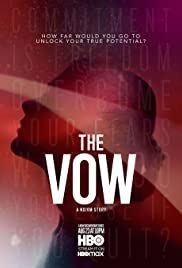 Image from IMDB.com
Image from IMDB.comTHE VOW and SEDUCED (2020)

The Vow, which I kept seeing advertised on Netflix/HBOMax, seemed like a good place for Kevin and I to settle during his Thanksgiving break (since we don’t often get to watch shows together). He hadn’t already seen it, and it was a crime show that I was curious to watch, unlike many of the others. Cults do make me curious, and both The Vow and Seduced arrived on the heels of Keith Raniere’s conviction for crimes at the head of NXIVM, a self-help company with a bit of a pyramid scheme that was sometimes accused of being a cult. The Vow was quite long for what it was; something like ten, hour-long episodes following the enrollment, involvement, and defection of a few of the top members. These four people eventually team up with the famous mom of a famous top member who was desperate to save her from the organization, which she found out was branding, torturing, brainwashing, and trafficking some of their members. Vow is done chronologically and with a lot of cinematic flair and modern feel, veeeery sloooowly unfurling the layers of the story. It has a bit of a soporific effect while also being really addictive. Each episode leads up to one startling revelation that is revealed at the very last second, drawing you further down the rabbit hole. In fact, there are many early episodes when you wonder, is this a cult? Is there anything even going on? While The Vow is a better series, there are still many questions left unanswered and once you turn to Seduced (Starz) to answer those questions—a much more conventional cult-exposure/crime documentary—you realize, as my husband kept saying, just how easy they were on Keith Reneire in The Vow. Nice, even. But note: there is a second half of The Vow series set for the spring of 2021, and I think they might keep revealing the layers of Raneire and his past as they move, chronologically, into the trial. And still there are a few questions, and I finished both series with a little online research. So, what I’m saying is that The Vow and Seduced are easily addictive and go well in that order followed by a little research. If you go in for that sort of thing, you’re bound to enjoy both of them.
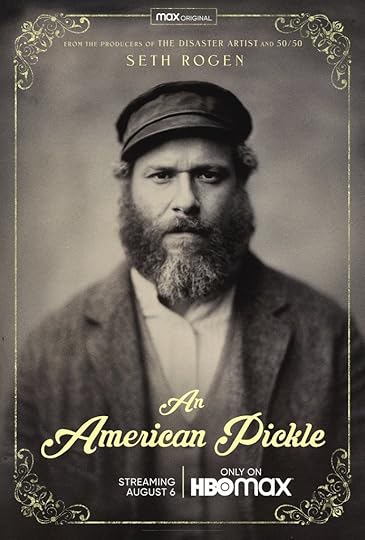 Image from IMDB.com
Image from IMDB.comAN AMERICAN PICKLE (2020)
My husband and I have been trying to get the kids to watch this for family movie night ever since it came out, what?, in the fall? Summer, even? For some reason, the concept that really appealed to us did not so much appeal to them: a hundred years ago a Jewish immigrant fell into a vat of pickle brine at the New York factory he was working in and the vat was closed and abandoned. When it’s opened, present-day, he is perfectly preserved and they find one living relative to take him in: his great-grandson, a hipster looking to make the next big app. Both parts are played by Seth Rogan. (So, some of the appeal might have come from our love of Freaks and Geeks and the actors it produced, but it was mostly the idea, which we thought was brilliantly funny and they thought was absurd and forgettable.) By the end, we had all met somewhere in the middle. It was better than they feared and it was not as great as we had hoped. Let me qualify that—I’m not sure we expected much from it, so maybe it was about what we expected and less than we had hoped. So, it’s an okay movie. It underscores the crazy roller-coaster of “cancel culture” and also the extremes of either being irreverent and prejudiced or being uber-sensitive and over-the-top PC. The acting was okay. The humor was subtle. Really about family and success. A movie you could watch, but it probably won’t become your favorite.
 Image from IMDB.com
Image from IMDB.comSOMEBODY FEED PHIL SEASON 4 (2018-2020)
Yay! Another season of Somebody Feel Phil came out! It was filmed right before the pandemic hit and all the footage was edited into two seasons, season 4 the second. Let me take you back. “It” all began in 2015 with I’ll Have What Phil’s Having. The six-episode series did not get renewed until it got re-bought and re-vamped by Netflix and became Somebody Feel Phil. I don’t know what was wrong with those original people, because I have loved Phil and his gustatory, good-will-spreading travels from episode one. It’s one of my favorite shows. They really keep teasing me, though, with these super short seasons and I hope that they keep on making them for a while. Phil, Phil Rosenthal, if you don’t know, is famous for Everybody Loves Raymond. He has done some acting, directing, and even writing besides, but this series is so wonderfully perfect for him: he’s goofy and funny and wide open, sure, but he’s also this older, Jewish guy who passionately loves food and even more passionately loves to meet people. Any people. All people. On the series, he comes across as sweet, kind, curious, willing to try just about anything, and smart. He’s a food lover more than a foodie (like, lacking the snobbery and maybe some of the knowledge) but just like Anthony Bourdain, this is journalism about people and culture more even than it is about food. It’s a pretty popular scene right now: using food to demystify and bring together through the medium of TV reality shows. My two favorites in this category have long been Anthony Bourdain and now Phil. You should at least check it out and see if you love Phil, too.
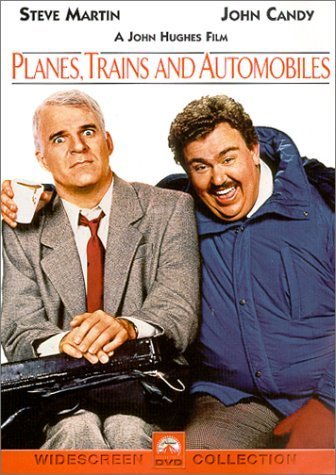 Image from amazon.com
Image from amazon.comPLANES TRAINS AND AUTOMOBILES (1987)
This movie was listed as a Thanksgiving watch, and it was a favorite growing up, so I managed to convince my son to watch it with me one night before bed. In my head, I was getting it mixed up with The Great Outdoors, Home Alone (the sub-plot with the mom trying to get home to Kevin) and even a little Tommy Boy. I haven’t seen it in a loooooong time. But I must have watched it plenty growing up because I always knew what was coming and more than a dozen scenes I whispered to my son, “Oh, this is a classic scene” before anything even happened. If you haven’t seen it, it falls in line with a number of other popular comedies from the late seventies to the early nineties. Starring John Candy and Steve Martin (hugely popular at the time), it follows one New York businessman (Martin) as he attempts to get home to his family in Chicago in time for Thanksgiving dinner. His plane is delayed and in his suffering he falls in with a curtain ring salesman (Candy) with a number of annoying habits but a much bigger heart. The rest of the movie is a number of spoofy obstacles between the two men and Chicago and incidences that keep squishing them together even as they naturally repel. There’s nothing wrong with this movie. It will need some careful reviewing if you want to present it to the family, but as nostalgic, grown-up entertainment, it has both a funny bone and soul, though the plot be predictable. Standard comedy gold.
 Image from amazon.com
Image from amazon.comCHARLIE BROWN THANKSGIVING (1965)
I make my children sit through a total of an hour, tops, of Peanuts viewing per year: It’s the Great Pumpkin, Charlie Brown for Halloween and A Charlie Brown Christmas for Christmas. They are traditions that I have clung to because when I was a kid, we knew every year when these were scheduled to air and we were home and on the couch, as a family, ready to watch. Nowadays, I own the DVD set and, should we feel too lazy to go upstairs and get them, they’re likely streaming somewhere we have a subscription, anyways. Speaking of my DVD set, it came not just with the two specials I was familiar with, but with a Thanksgiving and Easter one as well. I don’t know about the rest of Gen-X Americans, but these were below my radar. I find all the old Peanuts specials to by comforting. They are short and sweet, so the boring bits fly by, but it’s like returning to an encouraging friend. Linus is pretty much that encouraging friend. I also really enjoy the animation style here: the beautiful watercolor washes behind the boldly-outlined and somewhat crudely-drawn characters and major props. At only 25 minutes, how can you go wrong with trying it out?
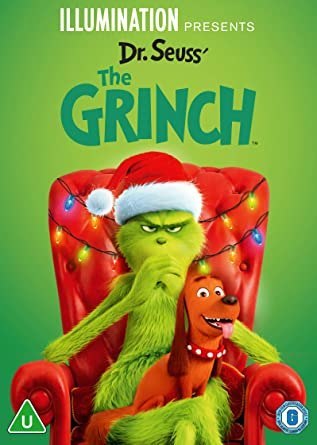 Image from amazon.com
Image from amazon.comTHE GRINCH (2018)
I had forgotten that there was another The Grinch movie that had come out in the last few years. I am happy with the original How the Grinch Stole Christmas, from 1966, to be honest, and had no use for the 2000 version starring Jim Carrey. My daughter wanted to watch this newest one in the couple days after Thanksgiving, however, and when I found out the Grinch was voiced by Benedict Cumberbatch, I was happy to oblige. If you are new to our culture, perhaps you don’t know about the Grinch. How the Grinch Stole Christmas is a children’s picture book written by Dr. Seuss and has become a given character in the American pantheon of Christmastime. He’s a second version of Scrooge (a la The Christmas Carol), playing the part of a curmudgeonly recluse who hates Christmas. In The Grinch, the Grinch purposefully seeks to destroy Christmas, but the resilience of the Whos change his mind and his heart, in the end. The 1966 movie is a short, animated, made-for-TV special that many children in the 70s, 80s, and perhaps even 90s grew up watching annually along with the Charlie Brown special (1965), Rudolph the Red-Nosed Reindeer (1964), and Frosty the Snowman (1969). So I have deep loyalties to these classic versions (except Frosty—I was never a fan) and a new movie would never replace the oldie, just be something else. All in all, the newest version—a CG animated blockbuster—is okay. It has its cute and interesting moments, its additional plotlines to drag the story out, its modern twists and relevancies. (It’s his color that both alienates and defines him here, though we never find out what exactly he is.) It also falls flat in many places (the back story, for instance, and the possibility of romance). It’s also missing some sort of magic, an authentic humor, perhaps. I would watch it again, next year, but I won’t be seeking it out or forgoing the oldest version.
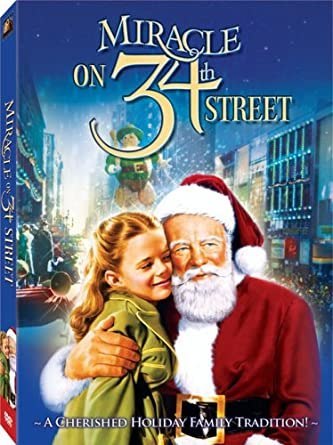 Image from amazon.com
Image from amazon.comMIRACLE ON 34TH STREET (1947)
I am revealing a hole in my life’s experiences here, but I don’t think I’ve ever seen Miracle on 34th Street. That might be forgivable for a youngin’, but I honestly don’t know how I skated through the last 40 years of Christmases without ever being submitted to Miracle on 34th Street. Then again, it wasn’t the sort of movie my parents would have liked. It’s reeeeealy classic, and was recommended to me recently as a good one to watch on Thanksgiving or the day after. Indeed, the opening scenes take place at the Macy’s Thanksgiving Day Parade, a TV tradition I do take part in every year, though nowadays it’s playing in the background while I am in eye- and ear-shot in the kitchen, cooking and baking away while I shoo the video-gamers away. The movie’s old-fashioned, black and white, and outdated, to be sure, and my kids would never tolerate a movie like this. I, on the other hand, have no problem with mining the classics—like in all sorts of fields and forms—for entertainment, enjoyment, and education. I can see why this movie has been popular and enduring. It is pretty solid, feel-good, and of course ends with Santa Claus being real, which is one of our most popular Christmas movie themes. It’s a romance and involves a child, bumbling authority, ill-intentioned establishment, and all the bells and whistles of a typical Christmas season. On the other hand, it touts traditional beliefs over new-fangled ones, and so, I’m sure, alienates many of the younger people. I’m sure there is someone, somewhere who has written about the dangerous, anti-feminist stance of this movie, but I find it harmless and calming. I agree, a great movie for Thanksgiving, when things are winding down and you’ve got either a whole range of people to please or the family room, punch, and pie all to yourself.
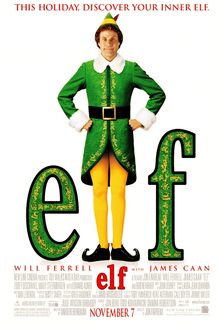
ELF (2003)
And then we dove into our regular holiday viewing with what is undoubtedly our family favorite: Elf. Clearly, we are not alone. Elf quickly shot its way into the pantheon of holiday viewing and has remained strong. Very strong. Starring Will Ferrell and Zoey Deschanel (among others), Elf is the story of a baby boy orphan who ends up in the North Pole and is raised as an elf, though he clearly doesn’t fit in. When Santa reveals to him who his real father is and—gasp!—that he is on the naughty list, Buddy the Elf takes off on a journey to New York City that is part rescue and part self-discovery. It’s straight-up comedy, though with a heart, and a sensitivity to a wide viewership, and I can’t imagine the person who won’t giggle along with Buddy’s antics and Ferrell’s one-liners. It’s cute and cuddly, but also funny and homey and very, very, Christmas-y. “Buddy the Elf! What’s your favorite color?”
November 30, 2020
Holiday Gifts for Writers and Readers
While my Christmas wish list includes things very pandemic—sweat pants and self-help books about anxiety—and things very me—roller skates, an old-fashioned bike, and about 600 cookbooks—it also includes plenty of things in the writerly and readerly vein. I thought, this year, I would make a list of great gifts for writers and for readers. Perhaps you have a writer or reader in your life, or perhaps you are a writer or reader looking for some things to add to your wish list. Obviously, you need to know a little about the person in order to pick out a gift, even from this list, but it’s a start. And some of the gifts are pretty universal, assuming they don’t already have it. Then again, there are a handful of these gifts that could be given over and over again.
[image error] Image from Amazon.com
FOR WRITERS
A new laptopLaptop sleeve and/or stylus and/or drawing pad and/or stickers and/or keyboard cover meant for their laptopI Wrote a Book About You, M.H. Clark or The Book About Me, Peter Pauper PressAn antique typewriterA car magnet that says, “You are dangerously close to being killed off in my novel”A neck and back massager that fits in their chairA subscription to Writers Digest or Poets & WritersA book from this list HEREThe Business of Being a Writer, Jane FriedmanWrite the Story and Complete the Story, Picadilly or 642 Things to Write AboutJournals: One Line a Day, or Keri Smith (Wreck This Journal, etc.)Thou Spleeny Swag-Bellied Miscreant, Sarah RoyalVex, Hex, Smash, Smooch, Constance Hale or Save the Cat!Desk and/or ChairBlue Light Reducing GlassesWriting glovesWriting-themed cookbooksWriter’s ClockThe Writer’s Toolbox/Writer Emergency PackA subscription to Journal of the MonthA fountain pen and inkSketchbook and drawing implements of choice, if they do that too“Being a Writer Is Easy” mugScrabble or BananagramsFliptionaryWriter’s Block wineScrabble or poetry refrigerator magnetsLiterary Insults ChartAdjustable footrest and/or Bouncy BandFidgetsLumbar supportRocketbookErgonomic wrist restLecone charger with desk organizerPassword BookCalendar for next yearAqua Notes waterproof paper pad and pencilAdult coloring bookEVISTR or Sony Digital Voice RecorderThe Emotion ThesaurusCoffee mug warmerBecoming, Michelle ObamaYETI bottleQuotation mark stud earrings“Meta Phors Be with You” t-shirtVintage typewriter inspired keyboardMy Coffee and Book Club with a writing book themeScribbler Gift SubscriptionWordsmith DeckMagnetic notebookMusic or music player of choice in format of choiceDictionary of the Strange, Curious & Lovely, Robin DevoeMargaret Atwood’s Creative Writing classWriter’s Tears WhiskeyLiterary journalsLiterary WonderlandsA Candle for Writer’s BlockWriter at Work door hangerPost it notesA red pen/markerFreewrite TravelerPep Talks for WritersLenovo Yoga BookWriter’s Block/Ultimate Writer’s BlockVirtual keyboardThe Emotional Wound ThesaurusTypewriter coaster gift setPortable glass tea infuserLap deskTravel journalArt markers“Please do not annoy the writer. She may put you in a book and kill you” mugCreative BlockCommas save lives mugBullet journalCanvases, paints (or whatever they use) and tools, if they swing that wayLarge totes or a rolling work bag, if they don’t already have too many
[image error] Image from theliterarygiftcompany.com
FOR READERS (which can also be useful for writers, too)
Out of Print scarves, like the one that looks like a library check-out cardOut of Print tee shirts, like the one that looks like check out stampsOut of Print sweatshirts, like the one with Matilda that says “Bookworm”Out of Print socksOut of Print bagsBooks Bucket List/100 Books scratch-off posterKindle/Book Bub/Audible subscriptionGift card to their local bookstorePoe-pourriDrink with the Great Drinkers shotglass setKey to 221 Baker Street necklaceLiterature/writing-themed coastersBook cover postcardsReading is Sexy swag“I Put Down My Book to Be Here” t-shirtBook artLibrary Set CandlesLibrary of Fragrance’s Paperback CologneBook lover pillowBookish jewelryBook club/subscription box membershipBooks from this list HERE or maybe HERELiterary NotesBookmark setsName stampBook platesFirst Lines Literature mugShakespeare, Not Stirred¸ Caroline BicksThe Literature Book or The Shakespeare Book, James Canton/DKNovel TeasA book nook kitLitograph t-shirtLiterary action figuresBookendsCard catalogue notecardsShakespeare mug



